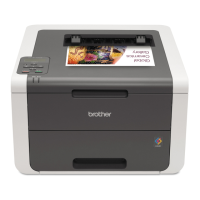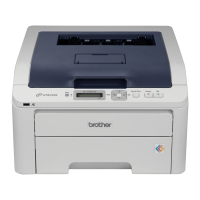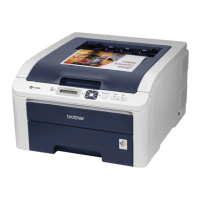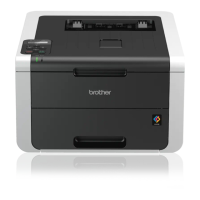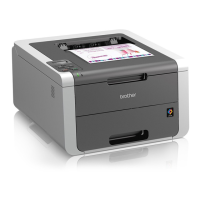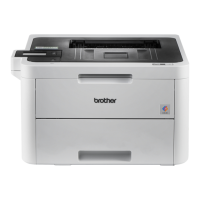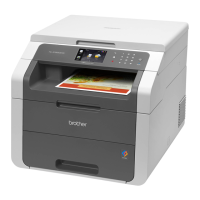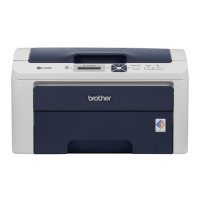
Do you have a question about the Brother HL-3400CN Series and is the answer not in the manual?
Warns about the printer's weight and the HOT fusing unit, requiring careful handling.
Covers warnings about ozone gas, liquids, fire hazards, laser beams, and open covers.
Advises turning off the printer before replacement and avoiding placing items on it.
Instructions for cleaning fuser oil spills and warnings about pressure on printer parts.
Provides an overview of the printer and covers setup and operation topics.
Details the standard features of the printer, including resolution, speed, and technologies.
Lists the standard features of the printer, such as resolution, speed, and technologies.
Describes optional hardware like tray units, duplex units, and network cards.
Details the recommended environmental conditions for printer operation and storage.
General introductory steps before printer setup, including component checking and safety.
Instructions on removing protective parts from the printer before setup.
Instructions for installing the four color toner cartridges, including notes on starter cartridges.
Details on loading paper into the standard and optional media cassettes, including paper types and capacity.
Instructions for connecting the printer to a computer via parallel or serial interfaces.
Steps for connecting the power cord and turning the printer on for the first time.
Instructions for installing the printer driver on Windows and Macintosh operating systems.
Explains the printer's automatic emulation mode selection based on received data.
Describes the printer's automatic selection of interface modes like parallel, serial, and network.
Overview of the printer's control panel, including display messages and languages.
Information on handling different types of paper and loading them into the printer.
Describes how the printer feeds paper from various cassettes and how to set paper size.
Explains how to use the special manual feed mode with Tray 1 for non-standard paper.
Explains the printer's LCD display and status indicator LEDs.
Details the functions of the control panel buttons when operating in NORMAL mode.
Explains how to enter different modes to change printer settings via the MODE button.
Instructions on how to manually select the printer's emulation mode.
Details how to enable or disable Toner Save and Power Save modes.
Explains how to select the feeder and manual feed mode using the FEEDER button.
Guide on how to perform printer tests and print lists of fonts using the TEST button.
Lists consumables and the messages that appear when they need replacement.
Instructions for replacing toner cartridges, including nearly empty and empty messages.
Information on replacing the fusing unit, including safety warnings about heat.
Instructions for cleaning the printer exterior and interior parts.
Steps for safely packing and moving the printer, including removing components.
Describes optional accessories available for the printer.
Details on expanding the printer's memory capacity by installing DIMMs.
Lists operator call messages, their meanings, and recommended actions to resolve issues.
Lists maintenance messages that appear when consumables need replacement.
Lists common error messages, their meanings, and troubleshooting steps.
Lists service call messages, their meanings, and recommended actions.
Describes how to identify and clear paper jams in various printer locations.
Provides detailed technical specifications for the printer's printing, laser, resolution, and consumables.
Lists the printer's core functions, including emulation, interface, RAM, and control panel features.
Details the printer's electrical requirements, power consumption, noise levels, and dimensions.
Specifies paper input types, sizes, and output delivery for various media trays.
Provides technical details for parallel and serial interface connectors and signals.
Lists available symbol and character sets for different emulation modes.


